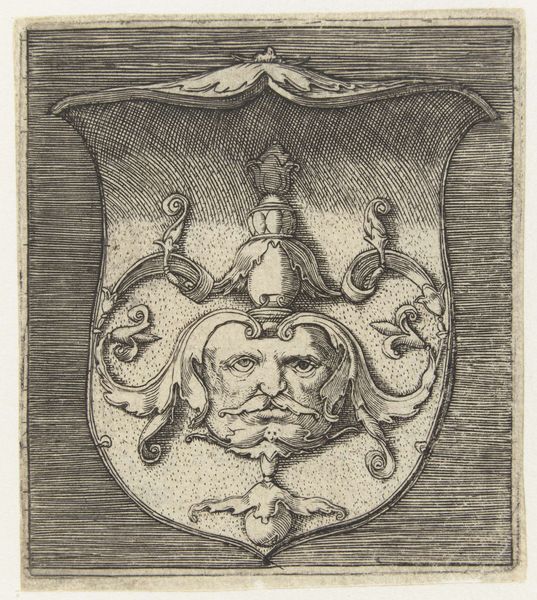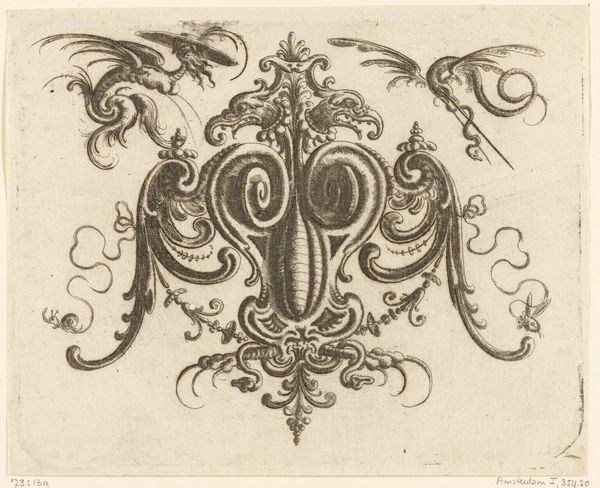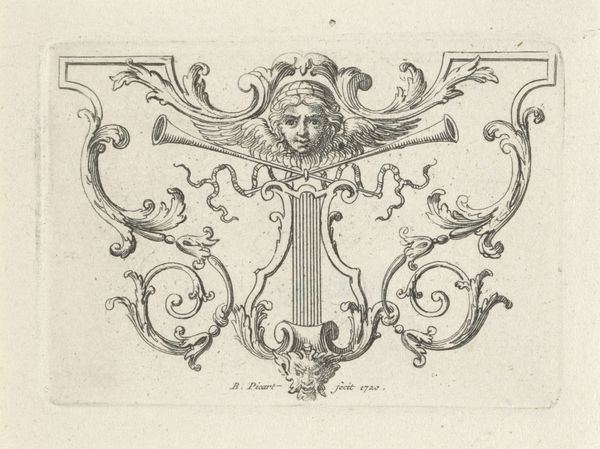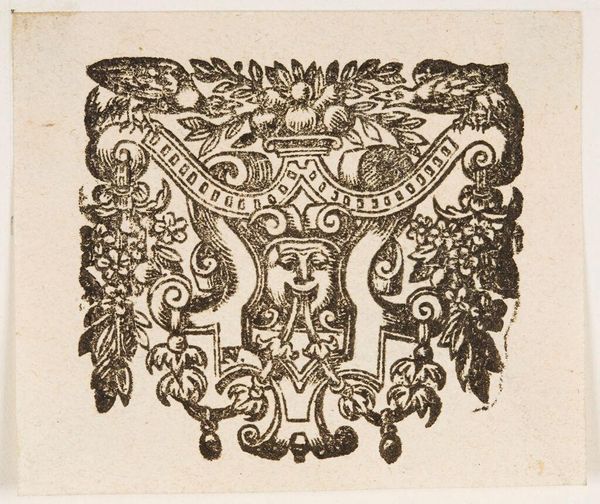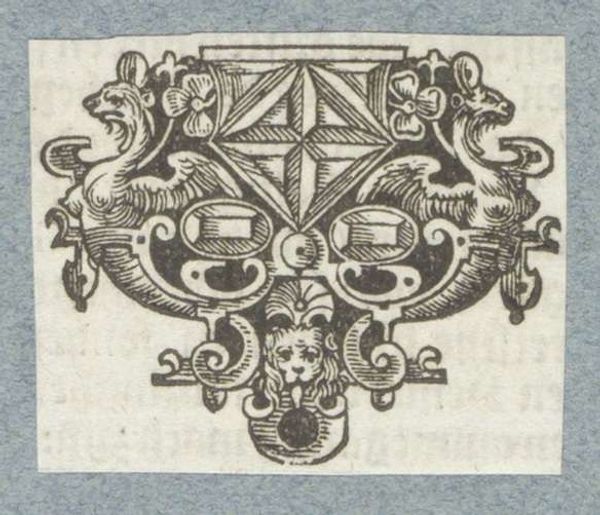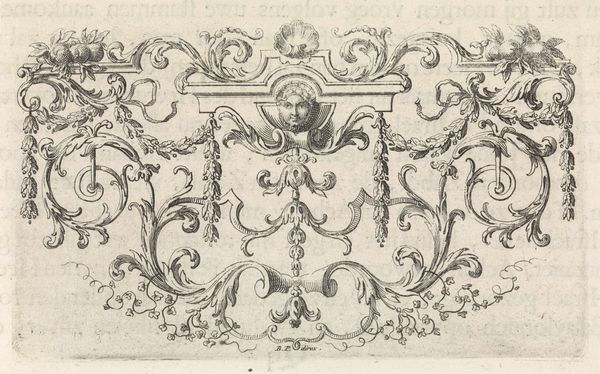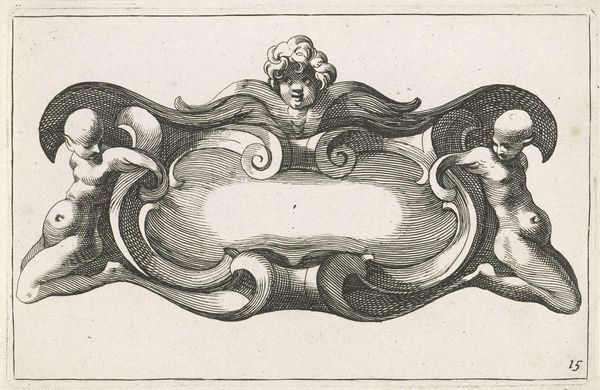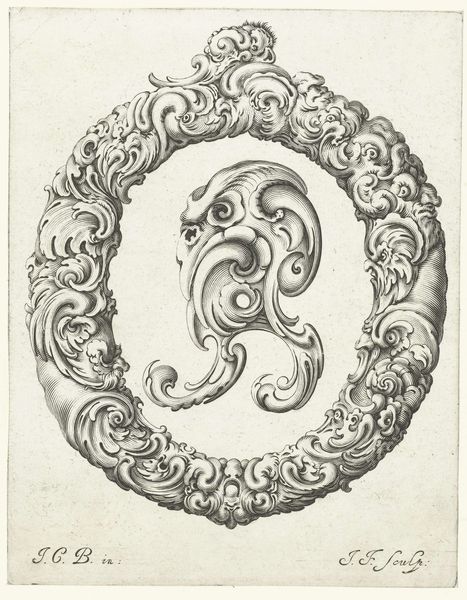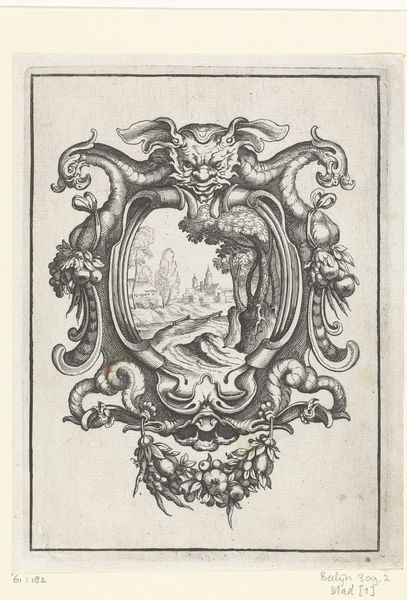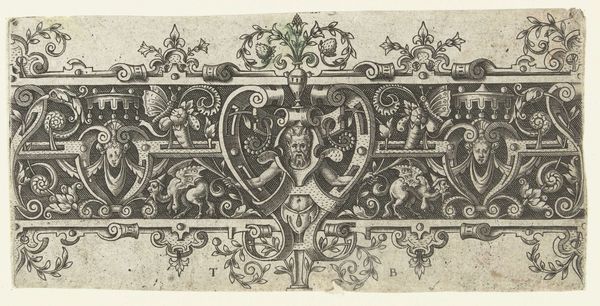
drawing, print, etching, engraving
#
drawing
#
baroque
#
neat line work
# print
#
pen sketch
#
etching
#
old engraving style
#
hand drawn type
#
form
#
personal sketchbook
#
pen-ink sketch
#
thin linework
#
line
#
pen work
#
sketchbook drawing
#
engraving
#
doodle art
Dimensions: height 58 mm, width 150 mm
Copyright: Rijks Museum: Open Domain
Editor: This is "Vignet met een mascaron, rolwerk en hybride wezens," dating from 1683-1733, located at the Rijksmuseum and created by Bernard Picart. It appears to be an engraving, almost like an elaborate architectural sketch. It’s so ornate, but also feels… constrained, somehow. What strikes you when you look at this? Curator: I see a fascinating dance between power and the societal constraints of the time. Consider the date – the late Baroque period. Ornamentation explodes, yet it's confined within these rigidly symmetrical forms. What’s the function of visual richness in this particular epoch? Think about the elite using symbolic language, drawing on mythology to legitimize power structures and social hierarchy. Editor: So the hybrid creatures, the mascaron, they’re not just decorative? Curator: Exactly! The grotesque mask, for example, might seem like a quirky decoration. But masks have historically served diverse purposes - masking identities, representing specific archetypes, or reinforcing cultural ideals. How does the use of mythical creatures function within systems of social control and meaning-making? What identities or power dynamics might they be alluding to? Editor: It's like they're building their power, but they're doing it using images that are very carefully coded, and everyone at the time would know exactly what they meant. Curator: Precisely. These symbols communicate specific values, creating a visual language that perpetuates a particular worldview. Now, consider the artist's position. Do you think Picart is simply replicating established conventions, or might there be a subtle critique embedded within the work? Can we challenge its intended function and prescribed reading? Editor: I didn't think of it that way, but now that you mention it, maybe there is something a bit rebellious. The rigid symmetry does almost feel like a satire of itself. Curator: Indeed. By examining these visual vocabularies critically, we can understand how they supported or challenged systems of domination and control, or perhaps something else entirely. It encourages us to analyze art as active agents within power dynamics, shaping identities, behaviors, and ways of life. Editor: This gives me a whole new framework for thinking about art from this period! Thank you!
Comments
No comments
Be the first to comment and join the conversation on the ultimate creative platform.
